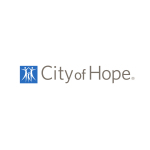Research includes a potential new drug for colorectal cancer, as well as new studies on geriatric oncology and supportive care medicine
DUARTE, Calif.–(BUSINESS WIRE)–#CityofHope–A targeted therapy for colorectal cancer and an immunotherapy drug for head and neck cancer are just some of the innovative treatments City of Hope doctors are presenting at this year’s ASCO20 Virtual Scientific Program, which starts today and ends May 31.
The American Society of Clinical Oncology’s annual conference discusses the latest research on cancer treatment, detection and prevention.
“City of Hope physicians are leading a wide array of novel research initiatives that will ultimately result in more effective cancer treatments, prevention and detection,” said Steven T. Rosen, M.D., provost and chief scientific officer; Irell & Manella Cancer Center Director’s Distinguished Chair. “The ASCO annual meeting brings together City of Hope and other leading cancer clinicians who are dedicated to sharing knowledge that will ultimately benefit patients.»
City of Hope doctors and scientists will present oral and poster presentations on a wide array of topics.
Targeted therapy against KRAS G12C mutation in colorectal cancer shows promising results
Advanced colorectal cancer that progressed on standard chemotherapy has limited treatment options. This is particularly true for KRAS mutated cancers, which do not respond to epidermal growth factor receptor targeting. A novel drug that targets the KRAS G12C mutation may offer hope for metastatic colorectal patients with this mutation, which occurs in about 3-5% of these patients.
AMG 510 is a targeted therapy that is taken orally on a daily basis and can inhibit the growth of KRAS G12C tumors. During this year’s ASCO virtual session, City of Hope’s Marwan Fakih, M.D., professor in the Department of Medical Oncology & Therapeutics Research and medical director of the Judy & Bernard Briskin Center for Clinical Research, for the first time discusses progression free survival data results for colorectal cancer patients who took AMG 510 in a first in-human, multicenter phase 1 clinical trial.
The trial enrolled 42 patients with advanced colorectal cancer and included four cohorts of patients who were assigned different doses of AMG 510.
At all dose levels, patients had median progression free survival (PFS) of four months, with the majority reporting few serious side effects; side effects that occurred included diarrhea, nausea and anemia. In addition, patients had a median overall survival rate of 10 months.
At all dose levels, 7% of patient had significant tumor shrinkage (partial response) and 69% had stable disease, resulting in a 76% disease control rate in the overall population. At the highest dose level of 960mg/day, which is the recommended phase 2 dose level, 12% of patients had an objective response and 80% experienced disease control. The median PFS at the 960 mg/day dose level was 4.2 months.
“The bottom line is that these data are meaningful for colorectal cancer patients with KRAS G12C mutation,” Fakih said. “AMG 510 appears to be more favorable in controlling metastatic colorectal cancer — and with few serious side effects — than current Food and Drug Administration-approved therapeutic agents that are used in third and fourth line treatment of this cancer.”
Next steps include a phase 1b study evaluating AMG 510 in combination with other targeted therapies or immunotherapy to capitalize on a synergistic activity demonstrated in preclinical studies, he added.
City of Hope leads pioneering evidence-based geriatric oncology study
Geriatric oncology is a burgeoning field in cancer that focuses on treating older adults — who account for 60% of new cancer diagnoses — with innovative interventions geared toward them. One of those interventions is a geriatric assessment tool for older adults with cancer.
Developed by the late Arti Hurria, M.D., founding director of City of Hope’s Center for Cancer and Aging, the assessment tool captures multiple domains, including but not limited to functional status, comorbidity and cognition to determine the functional age of older adults, therefore enabling a more tailored approach to cancer care.
A City of Hope-led randomized clinical trial is one of the first to now demonstrate that geriatric assessment driven interventions can reduce chemotherapy side effects. The results were presented as part of ASCO20’s virtual program.
Six hundred City of Hope older patients with solid tumors were enrolled in the trial. Two-thirds of the patients were enrolled in geriatric assessment-driven intervention (GAIN) and a third were enrolled in a standard of care approach in which only an oncologist guides the patient’s treatment.
“Geriatric assessment focuses on capturing the whole person, such as how much physical activity the patient can perform, what serious medical conditions he or she might have, a patient’s psychological status and other factors,” said Daneng Li, M.D., the trial’s principal investigator and an assistant clinical professor in City of Hope’s Department of Medical Oncology & Therapeutics Research. «What the assessment does is it really helps a patient’s medical team understand the true nature of the patient that you’re treating, rather than just one area of the patient. You’re getting a much richer picture of who this person is, how treatment can potentially impact them and approaches the medical team can take to reduce any negative impact.»
The patients were followed until their chemotherapy ended, or for six months of chemo treatment, whichever came first. Researchers then measured how many serious chemotherapy-related toxicities such as nausea and fatigue each group developed.
“The patients that were treated in the ‘GAIN’ arm had a reduction of 10% in significant chemotherapy-related toxicity, compared to the standard of care arm,” Li said. “The reason why this likely occurred is because the GAIN arm was composed of a multidisciplinary team of an oncologist, nurse practitioner, social worker, physical/occupational therapist, nutritionist and pharmacist, who worked together to offer interventions such as physical therapy, social support, nutrition recommendations, and review medication interactions to address potential areas of vulnerability detected on the geriatric assessment in older adults with cancer.”
“This is one of the first studies to show that if you intervene based on a patient’s geriatric assessment and provide them with the appropriate interventions, you can actually decrease someone’s toxicity from chemotherapy in an older adult population,” he added.
At the end of the study, advance directive completion also increased by 24% in patients in the GAIN group, compared to only a 10% increase in the standard of care group.
Li and his team now want to expand geriatric assessment and interventions to other cancer centers. Their plan is to develop implementation of geriatric assessment and interventions that can be delivered via telemedicine.
“One of Dr. Hurria’s dreams was that one day all older adults with cancer can receive personalized, tailored care,” Li said. “We want to make sure that her dream is realized, and that patients continue to benefit from her vision.”
City of Hope develops improved testing strategy to identify TP53 mutation
The inherited TP53 mutation significantly increases a person’s risk of developing cancer. Women with the rare mutation have a 50% chance of developing cancer by the age of 30 and a 90% chance over their lifetime; males with the syndrome have a 70% chance of developing cancer over their lifetime. The mutation can cause Li-Fraumeni syndrome, which can lead to the development of sarcomas, brain and breast tumors, and adrenocortical cancers.
But there is also another group of patients who have a TP53 mutation, and it is not inherited. These are patients who develop TP53 gene mutations in rapidly growing blood cells as they age, or is associated with exposure to chemotherapy. Knowing the difference is important, as care for each group is very different since those with the inherited mutation require more extensive cancer screenings and checkups.
Nevertheless, identifying which type of mutation a person has is a difficult task. Led by City of Hope’s Jeffrey Weitzel, M.D., City of Hope is presenting new research for ASCO’s virtual session on how the medical community can better discern whether a TP53 mutation a person has is inherited or acquired. (City of Hope is a leader in the research and treatment of patients with the TP53 mutation; it and other institutions recently received a $8.5 million grant from the National Institutes of Health to advance research and treatment for this serious syndrome.)
Approximately 20% of patients who are discovered to have a TP53 mutation with a commercial laboratory multigene panel test don’t have the inherited mutation, according to previous City of Hope studies. But researchers wanted to confirm which type of TP53 mutation these patients had.
“It’s a clinical conundrum because we have this challenge — you have a result that a clinician might normally interrupt as a mutation that the patient inherited and a clinician might think, ‘It’s Li-Fraumeni Syndrome,’” said Weitzel, director of City of Hope’s Division of Clinical Cancer Genomics and the Dr. Norman & Melinda Payson Professor in Medical Oncology. “But we know that a good portion of these are not the real McCoy.”
Among 113 cases with commercially detected TP53 who are enrolled in the Clinical Cancer Genomics Community Research Network registry led by City of Hope and other institutions, Weitzel and his team identified 42 cases where there was adequate clinical history, tissue and biospecimens.
Using their multi-tissue strategy, they were able to discern that six cases were inherited and present in all of the tissues identified, five cases were determined to be post-zygotic mosaicism (the mutation was acquired early in embryo genesis so present in a reduced frequency of tissues but in many tissues) and two were indeterminate. Twelve of the patients had developed TP53 in aging blood cells, and thus were presumably not at risk for TP53-related tumors.
The studies are ongoing as part of the National Institutes of Health-funded LiFTUP (Li Fraumeni and TP53 Understanding and Progress).
“With the use of our strategy, we were able to discern what type of TP53 mutation these patients had,” Weitzel said. “Our testing strategy helps us identify who has the inherited TP53 mutation and who doesn’t, which is critical in helping clinicians determine the best treatment plan for each type of patient.”
City of Hope’s integrated supportive care model reduces hospital length of stay
Living with cancer can be a difficult journey, but City of Hope’s Department of Supportive Care Medicine is a unique care model that provides its patients with invaluable resources and support to ease the challenges. Its integrated supportive care model puts patients in touch with experts in the field of palliative care, psychiatry, psychology, interventional pain, social work, child-life, distress screening, and couples counseling to help patients and their families cope with a cancer diagnosis. This helps patients spend as much quality time away from the hospital as possible.
“City of Hope has a special program here, one that brings together under one umbrella, a wide range of service working closely together as a unit, rather than as isolated parts,” said William Dale, M.D., Ph.D., the Arthur M. Coppola Family Chair of Supportive Care Medicine at City of Hope, and a health policy expert. “In this way, we wrap our patients with a comprehensive care plan. But more data is needed about this way of caring for patients, which is why our team collected this.”
“While we know that individual supportive care services can improve patient-reported outcomes and quality of life, few studies exist that evaluate the full impact of an integrated supportive care model like we have here at City of Hope,” said Jessica Kaltman, M.D., M.S.H.P.M, assistant clinical professor in the Division of Supportive Medicine within the Department of Supportive Care Medicine.
Kaltman, Dale, and other members of the research team, using data collected from City of Hope, set out to change that. Their research was featured during ASCO20’s virtual program. They collected data on 1,627 patients (809 with hematologic malignancies, 818 with solid tumors) who were hospitalized at City of Hope and then tracked if they were part of the integrated supportive care model either prior to hospitalization or after admission. Then, they compared the two groups to see if earlier supportive care, before a hospitalization occurred, influenced lengths of stay, ICU stays, or hospital costs.
For both hematology and medical oncology patients, they found that participation in this care model earlier, prior to hospitalization, resulted in decreased length of stay and decreased chance of ICU admission when compared to patients whose first contact with supportive care was only after the initial admission. Additionally, earlier contact with the integrated supportive care model led to decreased inpatient costs compared with those seen only after the first admission.
“Health systems constantly seek ways to increase inpatient and ICU bed capacity as demand for inpatient beds often outnumbers those available,” Kaltman said. “Our study suggests that involvement of an integrated supportive care model prior to a patient’s first hospitalization aids in increasing hospital bed capacity. This allows patients who require a higher level of care to receive timely treatment rather than being diverted to another hospital or spending a prolonged time in the emergency room.”
“In the past, when there wasn’t such concerns about long hospital stays or bed capacity, it was alright for patients to stay longer,” Dale added. “It is now recognized that longer hospital stays are bad for patients, leads to more complications, and is more expensive for the system. In a value-based care environment, shortening hospital stays, avoiding ICU days, and lowering costs is crucial. We found that an integrated and coordinated approach to supportive care, when enacted earlier, during out-patient care, can achieve all of these outcomes for cancer patients.”
The next steps are to study how early interaction with City of Hope’s integrated supportive care model impacts health care utilization and costs in the outpatient setting, and to see if it also leads to benefits. In the end, this data is leading the way toward showing that, by treating patients and families early, in a coordinated way, can both improve outcomes and lower costs, and those investments in supportive care can pay for themselves down the road.
Potential new treatment for head and neck cancer
Current standard of care for advanced head and neck squamous cell carcinoma is to use the anti-PD1 checkpoint inhibitor, pembrolizumab, with chemotherapy (platinum/5-fluorouracil) or without it. A clinical trial led by Erminia Massarelli, M.D., Ph.D., M.S., associate clinical professor in City of Hope’s Department of Medical Oncology & Therapeutics Research, has added an immunotherapy drug to that standard of care. Massarelli is presenting the trial’s safety results during ASCO20’s virtual program.
The immunotherapy is GSK3359609 (GSK609), which binds the inducible T cell co-stimulatory receptor (ICOS) molecule that is expressed on activated T cells.
“It’s a different mechanism than checkpoint inhibitors,” Massarelli explained. “The ICOS molecule is a receptor on the activated T cell. The binding of this receptor increases the activation on the T cell and therefore the immune response against cancer.”
By using GSK609 with an anti-PD1 checkpoint inhibitor such as pembrolizumab, a T cell is activated with two different mechanisms of action — ICOS, a direct activation, and pembrolizumab — an indirect activation of the T cell.
INDUCE-1 is a multi-cohort phase 1 clinical trial with two cohorts and 29 patients enrolled. The first group (10 patients) received GSK609 and chemotherapy (platinum and 5-fluorouracil), and another group (19 patients) received the immunotherapy, chemo (also platinum and 5-fluorouracil) and pembrolizumab.
“We found that these three and four drug regimens together are safe, and the addition of GSK609 doesn’t increase side effects, or cause any serious ones,” Massarelli said.
Most side effects were mild and consistent with pembrolizumab and chemotherapy toxicities.
Massarelli and her team now plan to open a phase 2/3 trial that will compare the use of the four drug regimen as a first-line therapy for patients with low PDL1 to standard of care treatment.
About City of Hope
City of Hope is an independent biomedical research and treatment center for cancer, diabetes and other life-threatening diseases. Founded in 1913, City of Hope is a leader in bone marrow transplantation and immunotherapy such as CAR T cell therapy. City of Hope’s translational research and personalized treatment protocols advance care throughout the world. Human synthetic insulin and numerous breakthrough cancer drugs are based on technology developed at the institution. A National Cancer Institute-designated comprehensive cancer center and a founding member of the National Comprehensive Cancer Network, City of Hope is the highest ranked cancer hospital in the West, according to U.S. News & World Report’s Best Hospitals: Specialty Ranking. Its main campus is located near Los Angeles, with additional locations throughout Southern California. For more information about City of Hope, follow us on Facebook, Twitter, YouTube or Instagram.
Contacts
Letisia Marquez
626-476-7593
lemarquez@coh.org




